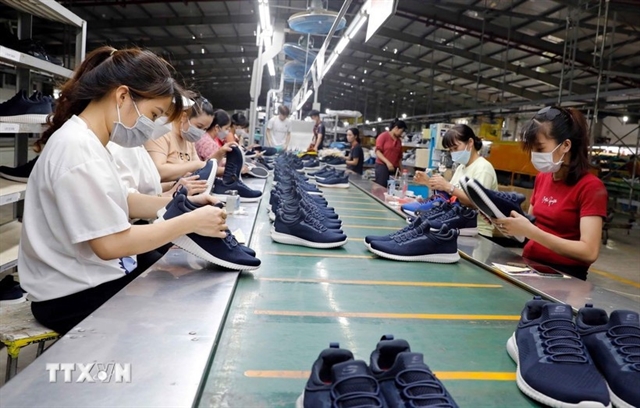 Society
Society

 |
| Super-intensive shrimp breeding ponds in Trà Vinh Province’s Duyên Hải Town. – VNA/VNS Photo Thanh Hoà |
TRÀ VINH – Trà Vinh will speed up restructuring of agriculture, adopt advanced farming techniques and develop value chains for various produce this year.
The Cửu Long (Mekong) Delta province aims to increase agricultural output by VNĐ500 billion to VNĐ30 trillion (US$1.26 billion), according to its Department of Agriculture and Rural Development.
Nguyễn Trung Hoàng, deputy chairman of the province People’s Committee, said to achieve the target the province would expand farming models that suit local conditions, develop further linkages between stakeholders, zone specialised farming areas for high-quality products and boost the use of advanced techniques for organic and hi-tech agriculture in particular.
It would prioritise aquaculture, he added.
The aquaculture output increased by 41,000 tonnes last year to 169,000 tonnes.
The province has 1,114ha of intensive shrimp farming ponds with a yield of 55-70 tonnes per hectare per crop.
It is also developing various models such as hi-tech shrimp farming, shrimp-rice, shrimp-forest, and mud crab farming.
Farmers are carrying out shrimp – rice farming on more than 5,600ha in coastal areas, earning VNĐ150-200 million ($6,300-8,400) per hectare per year, according to the department.
The department encourages farmers in coastal areas to adopt the model since it is highly productive, adapts to climate change and is sustainable.
Trần Văn Dũng, deputy director of the department, said hundreds of households had planted mangrove forests and breed shrimp in them, and earned VNĐ120-130 million ($5,000-5,500) per hectare per year.
The crustaceans bred under the shrimp-forest farming model were organic since farmers did not use chemicals and the shrimp ate natural food.
The province would continue to develop the shrimp-forest model until the farming area reaches around 5,700ha.
Many farmers also bred mud crabs, clams, blood cockles, and other aquatic species in mangrove forests and ponds.
Farmers in coastal areas had released 33 million mud crab juveniles into 6,200ha of forests and ponds this month as the salinity of the water was currently optimal for breeding the crab.
Nguyễn Văn Thạnh of Duyên Hải District’s Đông Hải Commune said the salinity rate in the local river had increased in the last two weeks and his 0.3ha mud crab breeding pond had a rate of 0.7-0.9 per cent, enabling him to release juveniles into it.
The price of the crab had been steady at VNĐ180,000 - 200,000 ($7.6 - 8.4) a kilogramme while he had earned VNĐ25 million ($1,000) per crop during the last three years, he said.
Nguyễn Văn Quốc, head of the Fisheries Sub-department, said the province encouraged farmers in coastal areas to rotate between mud crab and shrimp in their ponds to mitigate the risk of diseases and others caused by breeding three consecutive shrimp crops.
Farmers not having sufficient lands for practising super-intensive farming should switch to breeding mud crabs, he said.
Most mud crab farmers had earned substantially in the last five years because of the high demand for them and high prices, he said.
Breeding them requires low initial investment and there is very low risk of losing them, according to the official.
A crop lasts four to five months and offers a yield of 0.8 – 1.2 tonnes per hectare.
Trà Vinh plans to breed the crabs on around 20,000ha this year.
It also plans to use 1,565ha of rice fields for growing other crops and aquaculture this year, according to its People’s Committee.
Short-term crops will be grown on 852ha, perennial trees on 412ha and aquatic species and rice in turn on the remaining 301ha.
Lê Thanh Bình, deputy chairman of the People’s Committee, said the conversion was meant to effectively exploit lands, water and rural labour, thus improving farmers’ incomes.
Last year they converted 3,148ha, 2.5 times the target.
Most of the crops grown now offer farmers higher incomes than rice, according to the People’s Committee.
The province would focus on developing concentrated growing areas and value chains for agricultural products, Bình said.
The province would improve oversight of seed and other input quality and disease forecast to mitigate risks for farmers and teach them advanced farming techniques to improve production efficiency, he said.
It has 23,000ha of land where farmers use automatic irrigation and net houses and practise hydroponics. – VNS




